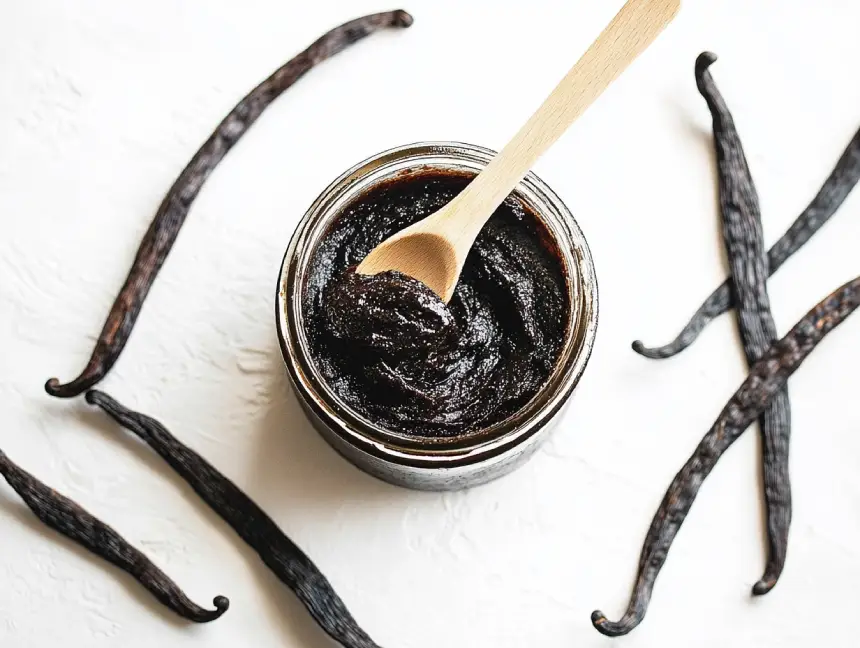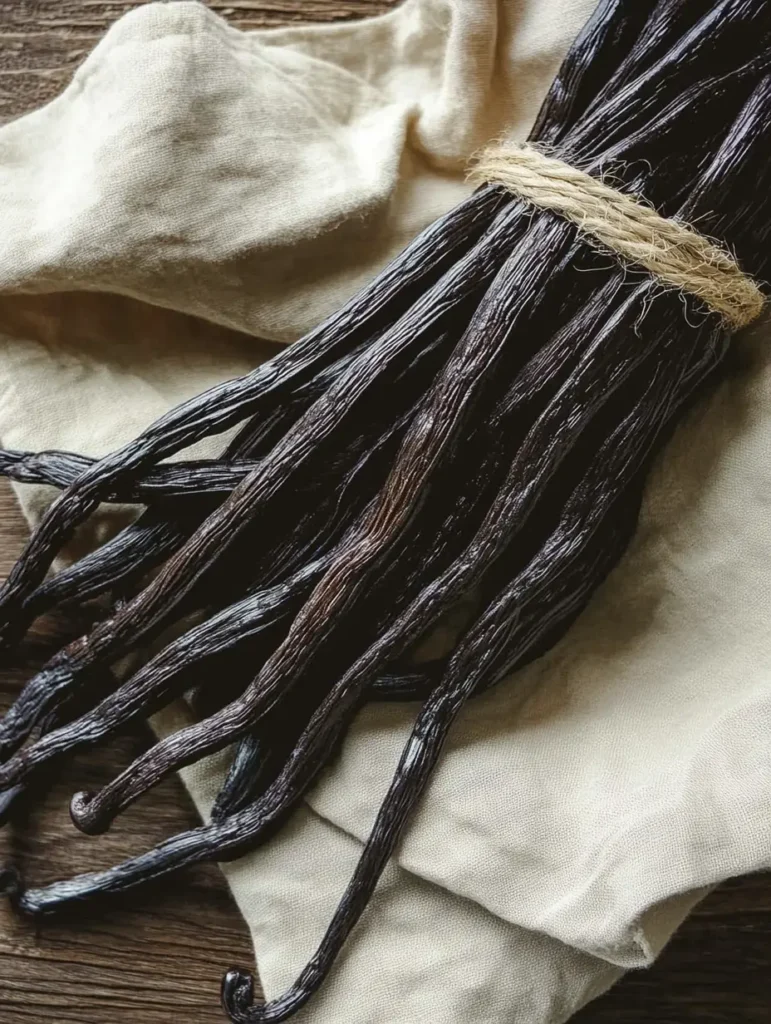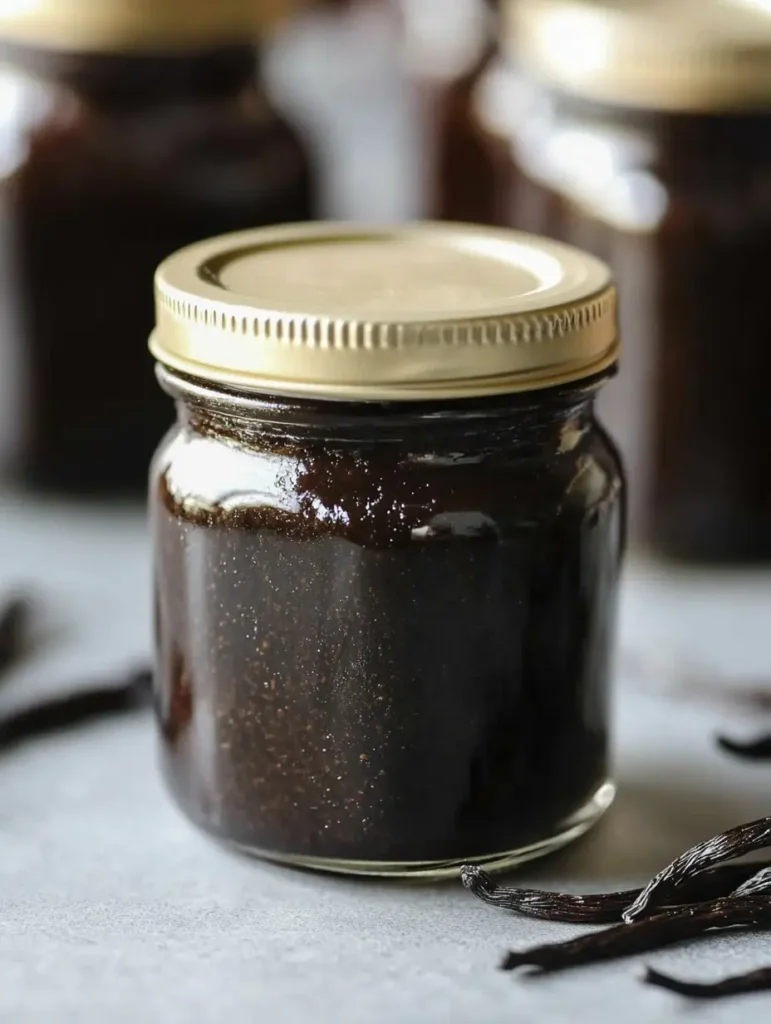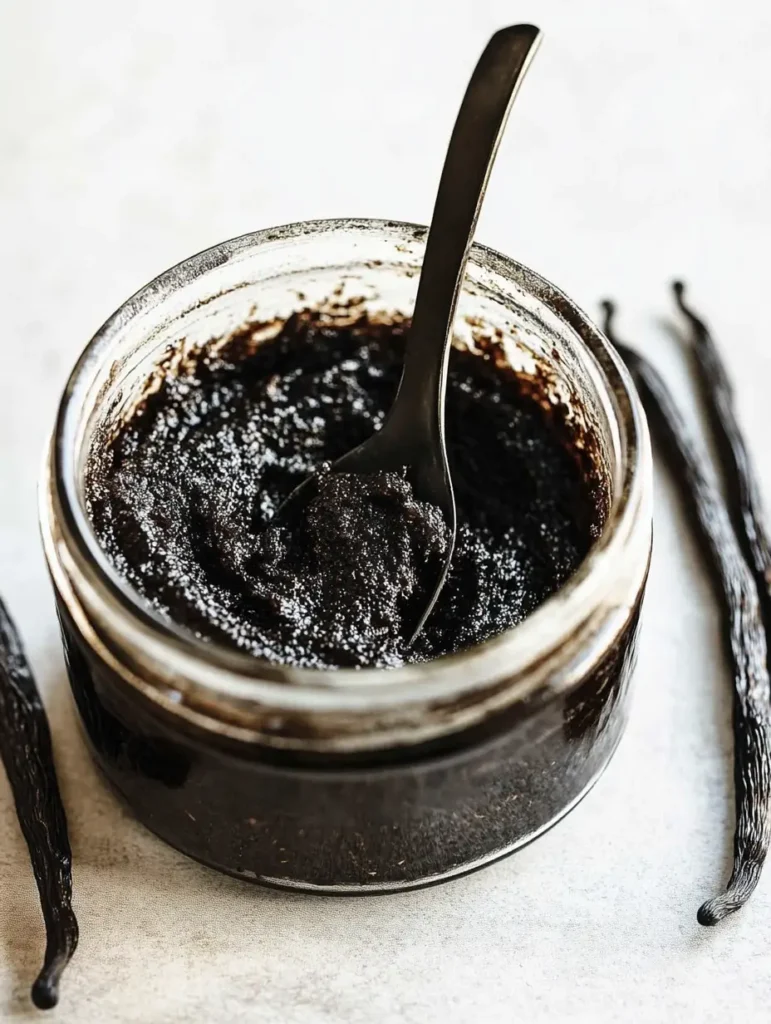Let’s have a talk concerning vanilla bean paste. If you are keen on baking, or indeed eating baked goods, you could come across it in recipes or could have seen it in stores. But, have you ever considered making your very own homemade vanilla bean paste? It is as simple as it sounds, and the results are worth it. It just tastes out of this world, and it also saves you money, really. Moreover, there is something just so nice about making your own gourmet ingredients in your kitchen, right?

So, let’s get to it because I am going to take you through everything you need to know about making, using, and loving homemade vanilla bean paste. By the end of this post, you’ll wonder why you didn’t try it sooner!
Why Make Vanilla Bean Paste at Home?
So, before we get into the details, let’s first answer the big question: Why bother making vanilla bean paste when you can just buy it? It’s a fair question, but here’s the thing—store-bought vanilla bean paste is convenient; however, it’s also pricey. Good-quality vanilla paste often costs $10 to $20 for a small jar, and if you bake a lot, that cost adds up fast.
Homemade vanilla bean paste is a lot cheaper and tastier than store bought. Plus, you get to be the judge of the ingredients: pure, rich vanilla flavor without empty fillers or unnatural stuff. And let’s face it: there’s just something magical about making the pantry staples yourself. Honestly, making the stuff feels like you’re leveling up your home chef skills every single time.
What Is Vanilla Bean Paste, Anyway?
So let’s bring it down. Vanilla bean paste is syrup-thick, a pleasure of vanilla bean seeds and sugar in a base like corn syrup or glycerin. That is, essentially, a happy medium between vanilla extract and whole vanilla beans. This means you get the intense flavor and those gorgeous black specks of vanilla beans, but without the hassle of slicing and scraping fresh pods every time you bake.
Moreover, it’s perfect for recipes where you want bold vanilla flavor—think cakes, cookies, frostings, ice cream, and even drinks like lattes or hot chocolate. Best of all, one teaspoon of paste is equivalent to one teaspoon of vanilla extract or one whole vanilla bean. Therefore, it’s a convenient and flavorful choice for both everyday and fancy recipes.
A Quick Look at Vanilla’s History
Did you know vanilla has been used for centuries? It originated in Mexico, Where it was grown by the Totonac people, and later embraced by the Aztecs. They believed it had magical properties—and honestly, they weren’t wrong! Vanilla spread to Europe in the 1500s When Spanish voyagers brought it back, and it quickly became a prized ingredient for its unique, aromatic flavor.
Today, vanilla is one of the most popular flavors worldwide, but the process of growing and curing vanilla beans is labor-intensive, which is why it’s often expensive. That’s all the more reason to make every ounce count with this homemade vanilla bean paste recipe!

Ingredients for Homemade Vanilla Bean Paste
Making vanilla bean paste at home requires just a handful of ingredients:
- Vanilla Beans: The star of the show! You’ll need about 10–12 plump beans for this recipe.
- Granulated Sugar: This acts as a thickener and helps preserve the paste. for a smoother texture you can use powdered sugar.
- Light Corn Syrup: This gives the paste its signature syrupy consistency. If you prefer a more natural option, food-grade glycerin works too.
- Vanilla Extract: Yes, we’re doubling down on the vanilla flavor for an extra punch.
- Water: Just a little to help blend everything smoothly.
Step-by-Step Recipe for Homemade Vanilla Bean Paste
Set the stage to make the kitchen smell like a vanilla factory. Well, here is how to do exactly that:
1: Prep Your Vanilla Beans
To start, take each vanilla bean and slice it open lengthwise to expose the tiny seeds within. Then, scrape out the seeds by using the back of a knife and set them aside. But throw away the emptied pods – they will still have a rich flavor and be part of the paste.
2: Blend the Ingredients
Next, in a blender or food processor, combine the vanilla seeds, sugar, corn syrup (or glycerin), and a splash of water. Then, blend until you have a thick, smooth paste. If the mixture seems too thick, simply add a tiny bit more water to loosen it up.
3: Add Vanilla Extract
After blending, stir in a tablespoon of vanilla extract. This step not only guatantees the flavor but alsomakes sure the paste has a well-rounded vanilla profile.
4: Strain (Optional)
At this point, if you prefer a super smooth paste without any large pieces, you can strain it through a fine-mesh sieve. Personally, though, I like leaving the little flecks in—they’re proof that you’re using the real deal.
5: Store It
Finally, transfer your paste into a clean, airtight jar. After that, store it in the refrigerator, where it will keep for up to six months. Every time you open that jar, the smell alone will make you smile.

Tips for the Best Vanilla Bean Paste
- Choose Quality Beans: Not all vanilla beans are created equal. Madagascar vanilla beans are known for their rich, creamy flavor, while Tahitian beans have a more floral, fruity profile. Mexican vanilla beans are a little spicier, with a bold, complex taste. Pick your favorite or mix and match!
- Don’t Waste the Pods: After scraping the seeds, the empty pods can still add flavor. Toss them in with the paste or save them for other uses, like making vanilla sugar or infusing cream.
- Adjust the Sweetness: If you like a less sweet paste, you can reduce the sugar slightly. Just keep in mind that sugar helps with the texture and shelf life.
- Experiment with Consistency: Want a thinner paste? Add a touch more water or glycerin. Prefer it thicker? Use less liquid.

How to Use Homemade Vanilla Bean Paste
Now that you’ve got a jar of homemade vanilla bean paste, the fun begins! Here are some of my favorite ways to use it:
1. In Baking
This is the obvious one. Swap vanilla bean paste for vanilla extract in recipes like cookies, cakes, muffins, and brownies. It’s a 1:1 substitution, so if a recipe calls for one teaspoon of vanilla extract, just use one teaspoon of paste instead.
2. In Frosting and Custards
Vanilla bean paste takes frostings, custards, and puddings to a whole new level. The rich flavor and those beautiful specks make your desserts look and taste fancy.
3. In Drinks
Add a small dollop of paste to your coffee, tea, or hot chocolate for a luxurious twist. It’s also amazing in milkshakes, smoothies, or even cocktails.
4. In Ice Cream
Homemade vanilla bean ice cream with this paste? Game-changer. Stir it into your ice cream base before churning for the creamiest, most flavorful treat.
5. In Savory Dishes
Okay, hear me out: a hint of vanilla can work wonders in savory recipes. Add a touch of paste to sauces or marinades for a subtle sweetness and depth of flavor.
Fun Ideas for Leftover Vanilla Pods
If you’ve got extra vanilla pods after making your paste, don’t throw them out! Here are a few ways to use them:
- Vanilla Sugar: Stick the pods in a jar of sugar and let it sit for per week or . The sugar will soak up the vanilla flavor, making it ideal for espresso or baking.
- Vanilla Extract: Place the pods in a bottle of vodka, and you’ve got homemade vanilla extract in a few months.
- Vanilla-Infused Cream: Simmer the pods in cream to infuse it with vanilla flavor. Use it for desserts like crème brûlée or panna cotta.
Why You’ll Never Go Back to Store-Bought
It’s as simple as this: If you make your personal vanilla bean paste, you’ll recognize that it’s not pretty much saving a couple of dollars or heading off components. It will dawn on you that it’s all about taste. The intensity and complexity of homemade vanilla certainly can not be in comparison to store-sold vanilla products. And, there may be simply some thing about understanding you made something so unique with your personal two hands.
Whether you’re baking holiday cookies, whipping up a birthday cake, or just making your morning coffee extra fancy, this paste is your new secret weapon.
FAQ
Is Vanilla Bean Paste the Same as Vanilla Extract?
No, they’re different. Vanilla extract is a liquid made by soaking beans in alcohol, while vanilla bean paste is thicker and includes the seeds, giving both intense flavor and those pretty black specks. Paste is great for recipes where flavor and presentation matter, like custards or ice cream.
Is Vanilla Bean Paste Worth It?
Yes! It offers bold flavor and a gourmet look with minimal effort. It’s perfect for recipes where vanilla is the star. While it’s pricier than extract, it’s more convenient and cost-effective than whole beans, making it a favorite for frequent bakers or special treats.
What Is a Substitute for Vanilla Bean Paste?
- Vanilla Extract: Use the same amount for flavor but no specks.
- Vanilla Beans: Scrape one pod for every teaspoon of paste.
- Vanilla Powder: Equal amounts for flavor and no liquid added.
- Imitation Vanilla: A budget-friendly option, but less flavorful.
What Vanilla Do Professional Bakers Use?
- Vanilla Bean Paste: For gourmet desserts with specks.
- Pure Vanilla Extract: A versatile, everyday choice.
- Whole Vanilla Beans: For authentic, high-end recipes.
- Vanilla Powder: Great for dry recipes like cookies.
Final Thoughts
Even although making home made vanilla bean paste might appear like a large task at first, it’s clearly short, smooth, and completely worth a while. In reality, it’s one of those small kitchen projects which can certainly remodel your baking and cooking. Once you strive it, I’m confident you’ll marvel why you didn’t start quicker.
So, with that during thoughts, now that you recognize how simple it is, what’s conserving you again? Go beforehand, clutch some vanilla beans, roll up your sleeves, and deliver it a shot. Plus, in case you’ve were given any questions—or maybe your personal pointers for perfecting vanilla bean paste—feel loose to drop them inside the remarks underneath. After all, I’d love to listen what you believe you studied!
Finally, in case you’ll excuse me, I’ve got cookies to bake with my selfmade vanilla bean paste. (And sure, believe me, they’re going to be high-quality!
PrintHomemade Vanilla Bean Paste
Vanilla bean paste is syrup-thick, a pleasure of vanilla bean seeds and sugar in a base like corn syrup or glycerin. That is, essentially, a happy medium between vanilla extract and whole vanilla beans.
- Prep Time: 10-15 minutes
- Cook Time: no cooking required
- Total Time: 27 minute
- Yield: About 1/2 cup of vanilla bean paste
- Category: Dessert
- Method: Mixing
- Cuisine: American
- Diet: Vegetarian
Ingredients
- Vanilla Beans: The star of the show! You’ll need about 10–12 plump beans for this recipe.
- Granulated Sugar: This acts as a thickener and helps preserve the paste. for a smoother texture you can use powdered sugar.
- Light Corn Syrup: This gives the paste its signature syrupy consistency. If you prefer a more natural option, food-grade glycerin works too.
- Vanilla Extract: Yes, we’re doubling down on the vanilla flavor for an extra punch.
- Water: Just a little to help blend everything smoothly.
Instructions
1: Prep Your Vanilla Beans
To start, take each vanilla bean and slice it open lengthwise to expose the tiny seeds within. Then, scrape out the seeds by using the back of a knife and set them aside. But throw away the emptied pods – they will still have a rich flavor and be part of the paste.
2: Blend the Ingredients
Next, in a blender or food processor, combine the vanilla seeds, sugar, corn syrup (or glycerin), and a splash of water. Then, blend until you have a thick, smooth paste. If the mixture seems too thick, simply add a tiny bit more water to loosen it up.
3: Add Vanilla Extract
After blending, stir in a tablespoon of vanilla extract. This step not only guatantees the flavor but alsomakes sure the paste has a well-rounded vanilla profile.
4: Strain (Optional)
At this point, if you prefer a super smooth paste without any large pieces, you can strain it through a fine-mesh sieve. Personally, though, I like leaving the little flecks in—they’re proof that you’re using the real deal.
5: Store It
Finally, transfer your paste into a clean, airtight jar. After that, store it in the refrigerator, where it will keep for up to six months. Every time you open that jar, the smell alone will make you smile.
Notes
- Choose Quality Beans: Not all vanilla beans are created equal. Madagascar vanilla beans are known for their rich, creamy flavor, while Tahitian beans have a more floral, fruity profile. Mexican vanilla beans are a little spicier, with a bold, complex taste. Pick your favorite or mix and match!
- Don’t Waste the Pods: After scraping the seeds, the empty pods can still add flavor. Toss them in with the paste or save them for other uses, like making vanilla sugar or infusing cream.
- Adjust the Sweetness: If you like a less sweet paste, you can reduce the sugar slightly. Just keep in mind that sugar helps with the texture and shelf life.
- Experiment with Consistency: Want a thinner paste? Add a touch more water or glycerin. Prefer it thicker? Use less liquid.
Nutrition
- Serving Size: per teaspoon
- Calories: 15-20
- Sugar: 5g
- Carbohydrates: 5g
Keywords: Vanilla Bean Paste


1 thought on “Homemade Vanilla Bean Paste”